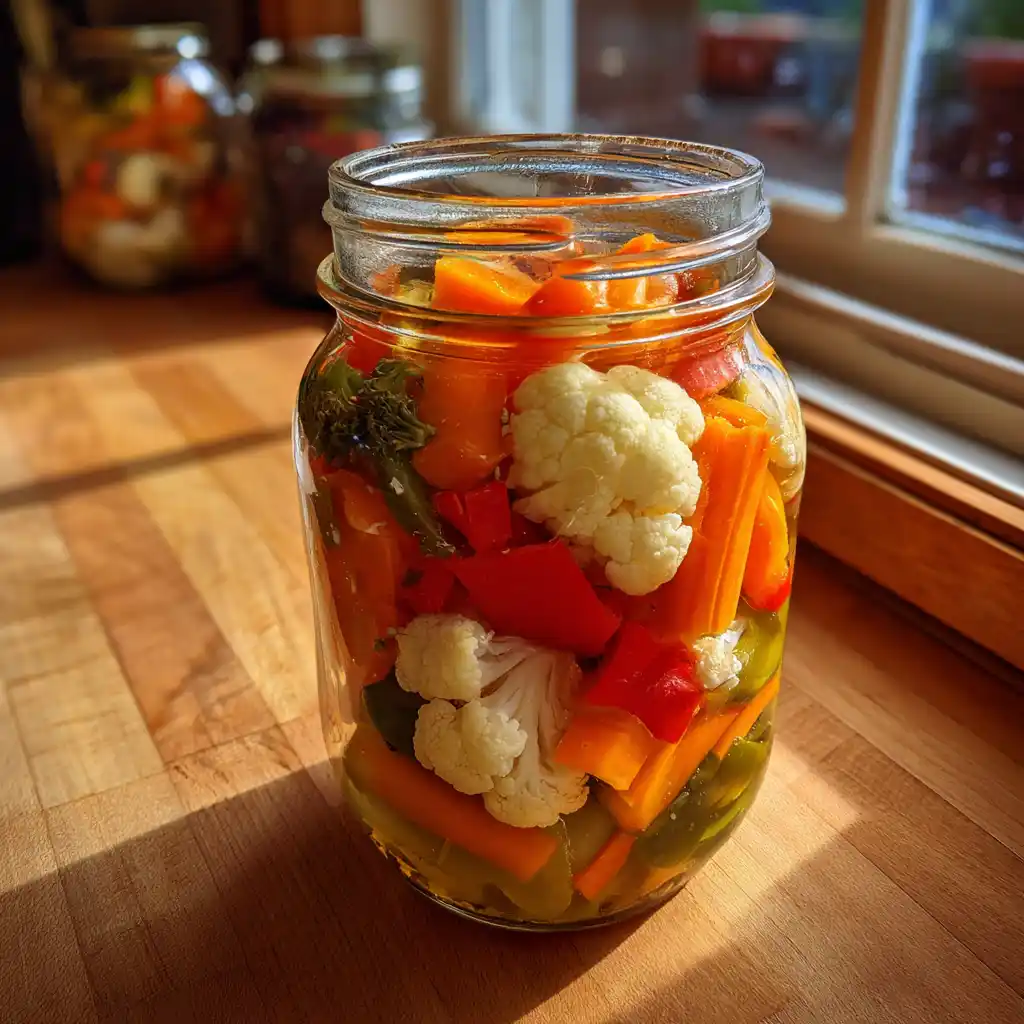Giardiniera is more than just a tangy jar of pickled vegetables — it’s a flavorful tradition passed down through generations. Whether used as a spicy sandwich topping or served as part of an antipasto spread, giardiniera adds bold character to any dish.
My journey with food began in a small coastal kitchen filled with the scent of rosemary and the warmth of family. I grew up around women who believed cooking was a way to share love, not just meals. One of my earliest memories is standing on a stool beside my aunt, sprinkling herbs on her famous olive bread. That spark of pride became a lifelong passion.
Today, I collect recipes that carry meaning, like giardiniera — a dish that tells stories through flavor. On this blog, you’ll find cozy meals and timeless traditions. Let’s explore everything there is to know about giardiniera, from its Italian roots to how you can enjoy it at home.
What Is Giardiniera?
Understanding Giardiniera: Origin and History
The word giardiniera comes from the Italian term for “gardener,” a nod to its fresh vegetable roots. This pickled medley was born out of necessity — a flavorful way to preserve seasonal harvests. Over time, it became a staple in Italian households, celebrated not only for its practicality but also for its tangy kick and vibrant presentation.
Traditionally, this pickled mix was made using whatever vegetables were abundant. Carrots, celery, cauliflower, and peppers were packed into jars with vinegar and herbs, creating a crunchy, savory treat that paired well with everything from meats to bread.
When Italian immigrants brought the concept to the U.S., the recipe evolved — especially in Chicago. There, a bolder version emerged, featuring oil-packed vegetables, spicy peppers, and olives, turning it into a must-have for hot Italian beef sandwiches.
This transformation highlights how food adapts across cultures, shaping new identities while honoring its roots.
Types of Giardiniera: Italian vs. Chicago-Style
There are two well-known styles of this preserved vegetable mix, each offering distinct flavor and texture:
| Type | Liquid Base | Texture | Flavor | Best Use |
|---|---|---|---|---|
| Italian-style | Vinegar | Crunchy | Tangy, mild | Appetizers, antipasto |
| Chicago-style | Oil | Slightly softer | Spicy, savory | Sandwiches, hot dogs |
The Italian version is lighter, often served with cured meats or cheese boards. Its punchy vinegar profile refreshes the palate and complements rich dishes.
The Chicago take is heartier. It uses oil and hot peppers, adding richness and heat — ideal for topping off sandwiches or stirring into pasta salads.
Print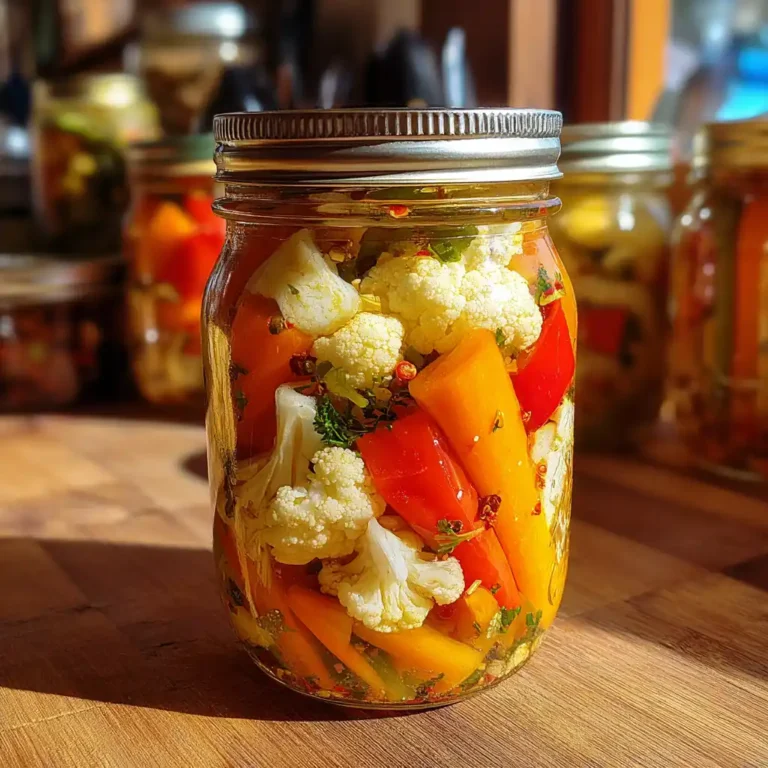
Giardiniera: The Ultimate Guide to Italy’s Pickled Vegetable Delight
A vibrant medley of pickled vegetables with deep Italian roots, transformed into a spicy Chicago-style classic — perfect for sandwiches, antipasto platters, and more.
- Total Time: 25 minutes
- Yield: 1 jar (16 oz)
Ingredients
- 1 cup cauliflower florets
- 1 cup carrots, sliced
- 1 cup celery, sliced
- 1/2 cup red bell pepper, diced
- 1/2 cup green bell pepper, diced
- 1/2 cup green olives, sliced (optional)
- 4–6 sport peppers or chili peppers
- 2 cloves garlic, smashed
- 1 tsp oregano
- 1 tsp salt
- 1/2 tsp black pepper
- 1/2 cup white vinegar
- 1/2 cup water
- Optional: 1/2 cup olive oil (for Chicago-style)
Instructions
- Cut all vegetables into bite-sized pieces and place them in a large bowl.
- Optionally blanch cauliflower and carrots for 1 minute, then cool in ice water.
- In a saucepan, boil vinegar, water, salt, and garlic. Remove from heat.
- Pack vegetables into a clean jar and pour the hot brine over them. For Chicago-style, add olive oil once cooled.
- Add oregano, black pepper, and optional chili flakes.
- Seal the jar and refrigerate for at least 48 hours. Flavor improves after 3–5 days.
Notes
Adjust the spice level by varying the number and type of peppers. Store in a non-reactive glass jar and always use clean utensils when serving.
- Prep Time: 20 minutes
- Cook Time: 5 minutes
- Category: Condiment
- Method: Pickled
- Cuisine: Italian-American
Giardiniera Ingredients Breakdown
Core Vegetables Used in Traditional Giardiniera
At its heart, giardiniera is a vibrant mix of crunchy vegetables, carefully selected for texture, color, and flavor. Whether you’re following a traditional Italian recipe or adding a Chicago twist, the foundational veggies remain quite consistent.
Here are the most common vegetables used in giardiniera:
| Vegetable | Flavor Contribution | Texture |
|---|---|---|
| Cauliflower | Mild, earthy | Crunchy |
| Carrots | Sweet, slightly bitter | Crisp |
| Celery | Fresh, peppery | Snappy |
| Red & Green Bell Peppers | Sweet and tangy | Juicy |
| Green Beans | Neutral, grassy | Firm |
| Olives (mostly in Chicago-style) | Briny, savory | Soft |
| Hot Peppers or Sport Peppers | Spicy kick | Tender |
While these are traditional, feel free to add personal flair with seasonal or locally available vegetables — even asparagus, zucchini, or radishes work well when pickled properly.
These vegetables are first blanched or salted, then soaked in a brine to lock in flavor and extend shelf life.
Seasonings and Marinades That Make It Unique
The real magic of giardiniera lies in the marinade. Italian-style giardiniera typically uses a vinegar base, while Chicago-style opts for oil. Both styles use powerful seasoning blends to give each bite its signature boldness.
Here’s what goes into the marinade:
- White or red wine vinegar (Italian-style)
- Olive oil or vegetable oil (Chicago-style)
- Salt and sugar for balance
- Garlic cloves for aroma
- Oregano, thyme, bay leaf for earthy depth
- Crushed red pepper flakes or sport peppers for heat
- Black peppercorns for sharp spice
You can adjust the heat level by adding more peppers or using a milder chili. Want a crunchier finish? Stick with a cold-pickle method. Prefer deeper flavor? Let it marinate for a few days before using.
Discover more flavor-boosting ideas in our apple cider vinegar detox drink article — vinegar isn’t just for pickling!
Don’t miss our caprese salad for another refreshing Mediterranean-style dish that pairs beautifully with giardiniera.
Health Benefits of Giardiniera
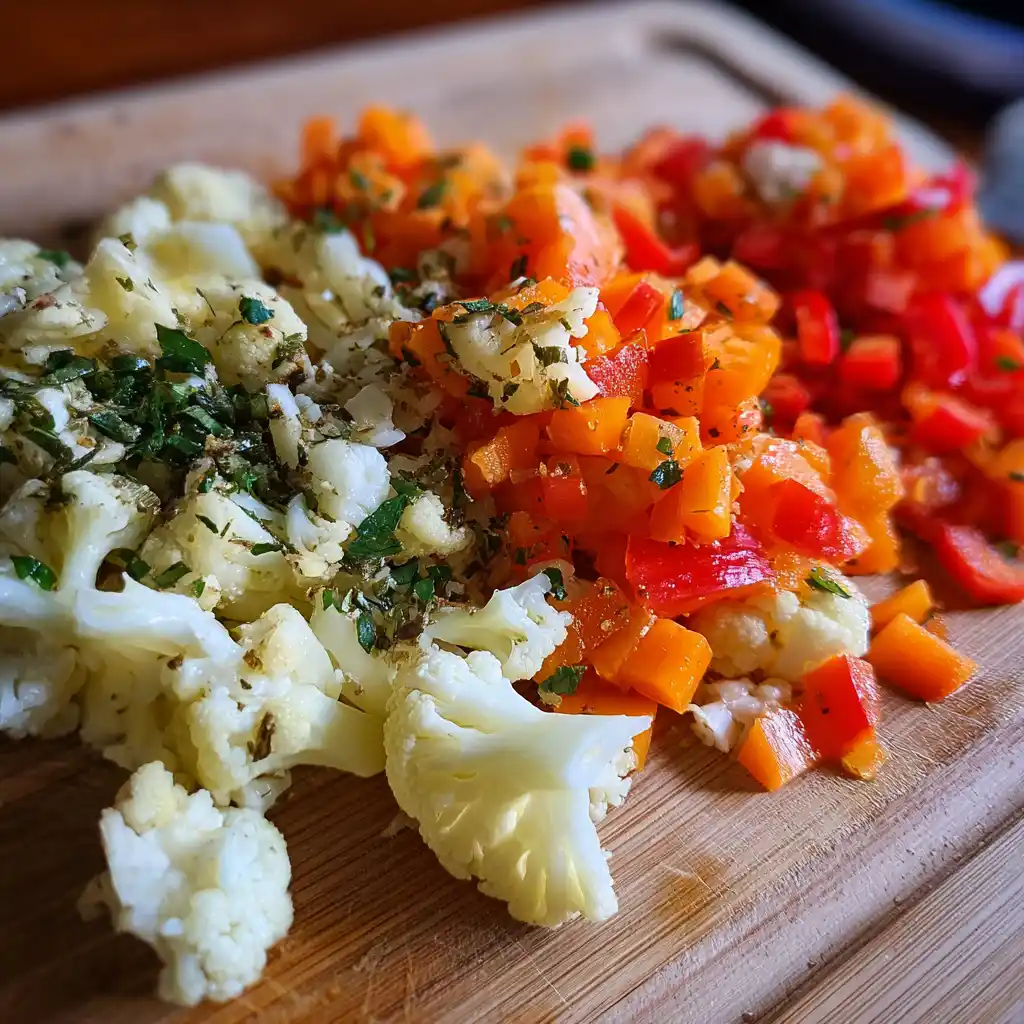
Is Giardiniera Healthy? Nutritional Pros and Cons
You might be wondering if this flavorful pickled mix fits into a healthy diet. The answer? Yes — when made right, giardiniera can be a nutrient-packed addition to your meals. It delivers crunch, taste, and real health benefits, especially when homemade or sourced from clean-label brands.
Here’s what makes this preserved vegetable blend worth adding to your plate:
| Nutrient | Found In | Benefit |
|---|---|---|
| Fiber | Cauliflower, carrots, celery | Aids digestion and promotes satiety |
| Vitamin C | Bell peppers | Supports immunity and skin health |
| Antioxidants | Garlic, peppers | Helps reduce inflammation |
| Probiotics | Fermented versions | Supports gut health |
| Healthy fats | Olive oil (in oil-packed types) | Boosts heart health (in moderation) |
Keep in mind that store-bought versions — especially oil-packed Chicago-style jars — can be high in sodium and fat. It’s best to check the label for hidden sugars, preservatives, and excess salt. Or better yet, make your own to control the ingredients.
Discover great ideas like apple cider vinegar detox drink, which shares similar gut-friendly properties thanks to fermented vinegar content.
Pickled Vegetables and Gut Health: What Science Says
Pickled foods like giardiniera can benefit gut health, particularly when fermented. Fermentation promotes the growth of healthy bacteria called probiotics. These support digestive balance, reduce bloating, and improve nutrient absorption. However, not all versions are fermented — many are simply preserved in vinegar, which doesn’t provide the same probiotic effects.
Still, vinegar-based versions can be beneficial too. Vinegar itself may help regulate blood sugar, reduce cravings, and enhance the feeling of fullness after meals.
If you’re focused on digestion or a low-calorie diet, look for homemade or small-batch brands that avoid excessive oil and sodium.
Don’t miss our healthy smoothie recipes for more gut-friendly options that pair well with savory, crunchy additions like giardiniera.
The Flavor Profile of Giardiniera
What Does Giardiniera Taste Like? Tangy, Spicy & More
If you’ve never tried it before, you might be wondering: what does giardiniera taste like?
The answer depends on the style, but in general, giardiniera offers a bold, complex balance of tanginess, spice, and savoriness. Its pickled base brings that signature vinegar bite, which is softened by the natural sweetness of vegetables like carrots and bell peppers. In Chicago-style varieties, the flavor deepens with spicy chili peppers, garlic, and a richer oil infusion.
Here’s how the taste varies between types:
| Style | Tanginess | Heat Level | Overall Flavor |
|---|---|---|---|
| Italian-style | High | Mild to none | Clean, garden-fresh, acidic |
| Chicago-style | Moderate | Medium to high | Rich, spicy, savory |
In short, Italian-style giardiniera is more about sharp, vinegary brightness — great for cutting through heavier foods. Chicago-style delivers a punchy, oily, spicy profile that clings to whatever it touches — making it irresistible on sandwiches and pasta salads.
Looking for inspiration? Try grilled portobello mushrooms — they soak up giardiniera’s bold flavors beautifully.
Texture and Aromatic Notes Explained
One of the most satisfying elements of giardiniera is its crunch factor. Cauliflower florets hold up well in brine, carrots offer a satisfying snap, and celery adds both structure and a clean bite. Bell peppers soften slightly while still maintaining integrity — making each bite layered in both taste and feel.
The aromatic profile depends heavily on herbs and garlic. Oregano and thyme add earthy undertones, while bay leaves provide warmth and depth. Garlic adds sharpness and complexity, tying everything together.
Combined, these ingredients create a multisensory experience: crunchy, zesty, a little fiery, and deeply satisfying.
Check out caprese salad as a refreshing complement — the creaminess of mozzarella pairs wonderfully with the tangy bite of giardiniera.
How Italians Eat Giardiniera
Serving Traditions in Italy: Antipasti to Sandwiches
In Italy, giardiniera is treated less as a spicy topping and more as an elegant side or starter. It’s a common sight on antipasto platters, where it brings color, acidity, and crunch to a lineup of cured meats, cheeses, and marinated olives. Italians appreciate balance in their meals, and giardiniera delivers just that — especially when paired with rich, salty bites like prosciutto or pecorino.
You’ll also find giardiniera served:
- Alongside grilled meats and seafood
- As a cold side dish at lunch
- Lightly drained and added to fresh salads
- On crusty bread as a rustic snack
In home kitchens, it’s a go-to condiment that adds flavor without the need for cooking. And because it keeps well in the fridge, it’s always ready to go for quick meals or entertaining.
Looking for other light Mediterranean-style dishes? Don’t miss our green detox juice to pair with savory snacks like giardiniera and olives.
Giardiniera as a Condiment vs. Side Dish
Italians typically don’t use giardiniera the way Chicagoans do — piled high on hot sandwiches — but that doesn’t mean it lacks versatility. It can work either as:
| Use | How It’s Served | Ideal With |
|---|---|---|
| Condiment | Finely chopped, lightly drained | Salads, bruschetta, cold meats |
| Side Dish | Whole or chunky vegetables in brine | Cheese boards, grilled chicken or fish |
For a more refined presentation, Italians sometimes drizzle giardiniera with extra virgin olive oil, turning it into a light, zesty salad. It’s also common to see the vegetables arranged beautifully on serving platters, showing off the vibrant colors and textures.
While Italian-style giardiniera leans mild, some families spice it up with extra chili or garlic — creating a hybrid style that still respects its roots.
Explore more Italian-inspired pairings like baked boneless chicken thighs — their tender juiciness contrasts beautifully with pickled vegetables.
PART 6: How to Make Giardiniera at Home
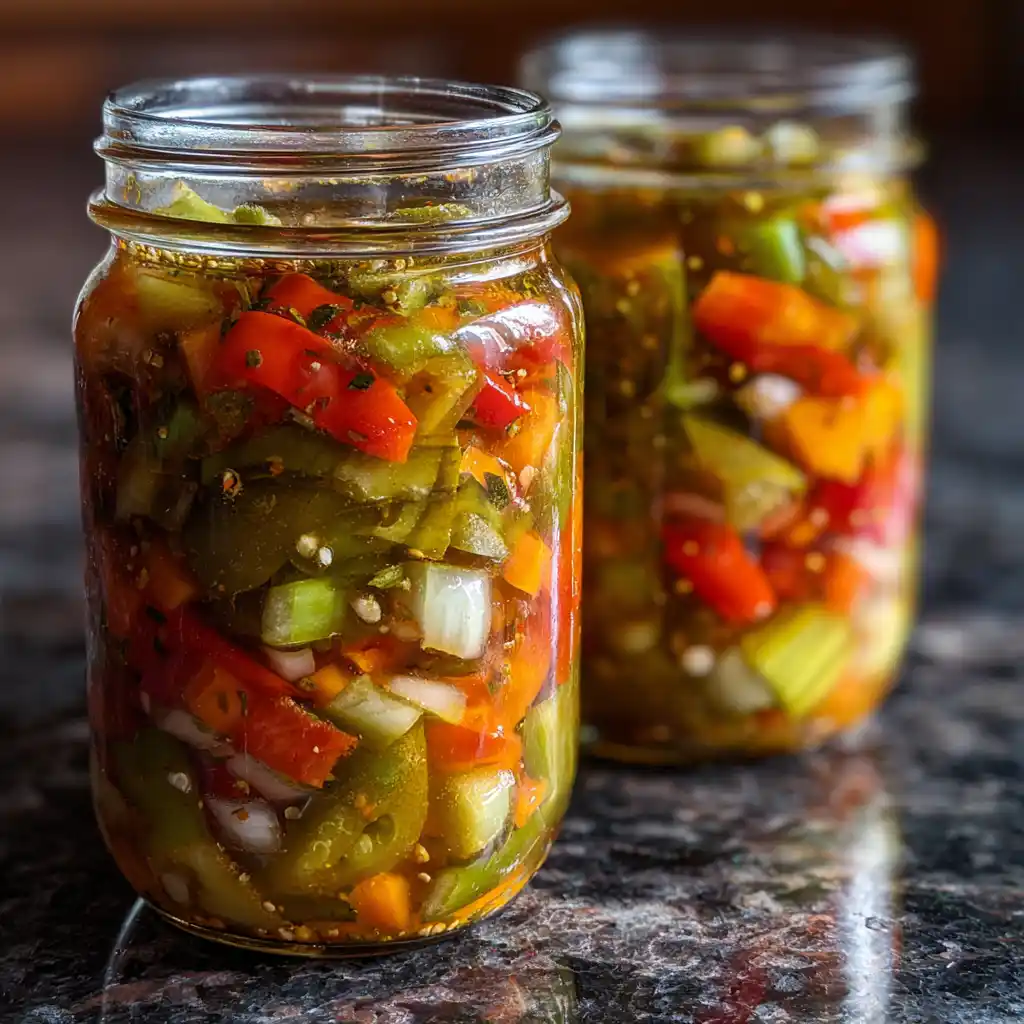
Step-by-Step Homemade Giardiniera Recipe
Making giardiniera at home is easier than you might think — and it’s one of the best ways to control the ingredients, flavor, and heat. Whether you’re after the crisp tang of Italian-style or the spicy richness of Chicago-style, this method covers both.
Here’s a basic homemade recipe that you can customize:
Ingredients:
- 1 cup cauliflower florets
- 1 cup carrots, sliced
- 1 cup celery, sliced
- 1/2 cup red bell pepper, diced
- 1/2 cup green bell pepper, diced
- 1/2 cup green olives, sliced (optional)
- 4–6 sport peppers or chili peppers (for heat)
- 2 cloves garlic, smashed
- 1 tsp oregano
- 1 tsp salt
- 1/2 tsp black pepper
- 1/2 cup white vinegar
- 1/2 cup water
- Optional: 1/2 cup olive oil (for Chicago-style)
Instructions:
- Prep the veggies: Cut all vegetables into bite-sized pieces and place them in a large bowl.
- Blanch (optional): For slightly softer texture, blanch the cauliflower and carrots for 1 minute, then cool in ice water.
- Create brine: In a saucepan, bring the vinegar, water, salt, and garlic to a boil. Remove from heat.
- Pack the jar: Fill a clean glass jar with the vegetables and pour the hot brine over them. For Chicago-style, add olive oil after cooling.
- Add spices: Drop in oregano, black pepper, and optional chili flakes.
- Chill and wait: Seal the jar and refrigerate for at least 48 hours before tasting. Flavor improves after 3–5 days.
This makes a small batch (about one 16 oz jar), but it scales easily. Just keep the vinegar-to-water ratio consistent for safety and flavor.
Fermented vs. Vinegar-Pickled: Which to Choose?
When it comes to preserving vegetables, you’ve got two main methods: fermentation or vinegar pickling. Both give giardiniera its iconic zing, but they differ in flavor and health benefits.
| Method | Flavor Profile | Health Benefits | Shelf Life |
|---|---|---|---|
| Fermented | Milder, more complex | Contains probiotics | 1–2 months refrigerated |
| Vinegar-Pickled | Sharper, more acidic | No probiotics, but still nutritious | Up to 6 months |
Fermented giardiniera uses salt brine and natural bacteria to slowly transform the veggies. It takes longer (about 5–7 days at room temp), but delivers gut-boosting probiotics and a mellower flavor.
Vinegar-based versions, on the other hand, are faster and more common. They’re shelf-stable when canned properly, and deliver that unmistakable punchy taste many fans crave.
Whichever route you choose, you’ll end up with a flavorful, homemade condiment that outshines anything store-bought.
Creative Uses for Giardiniera in Meals
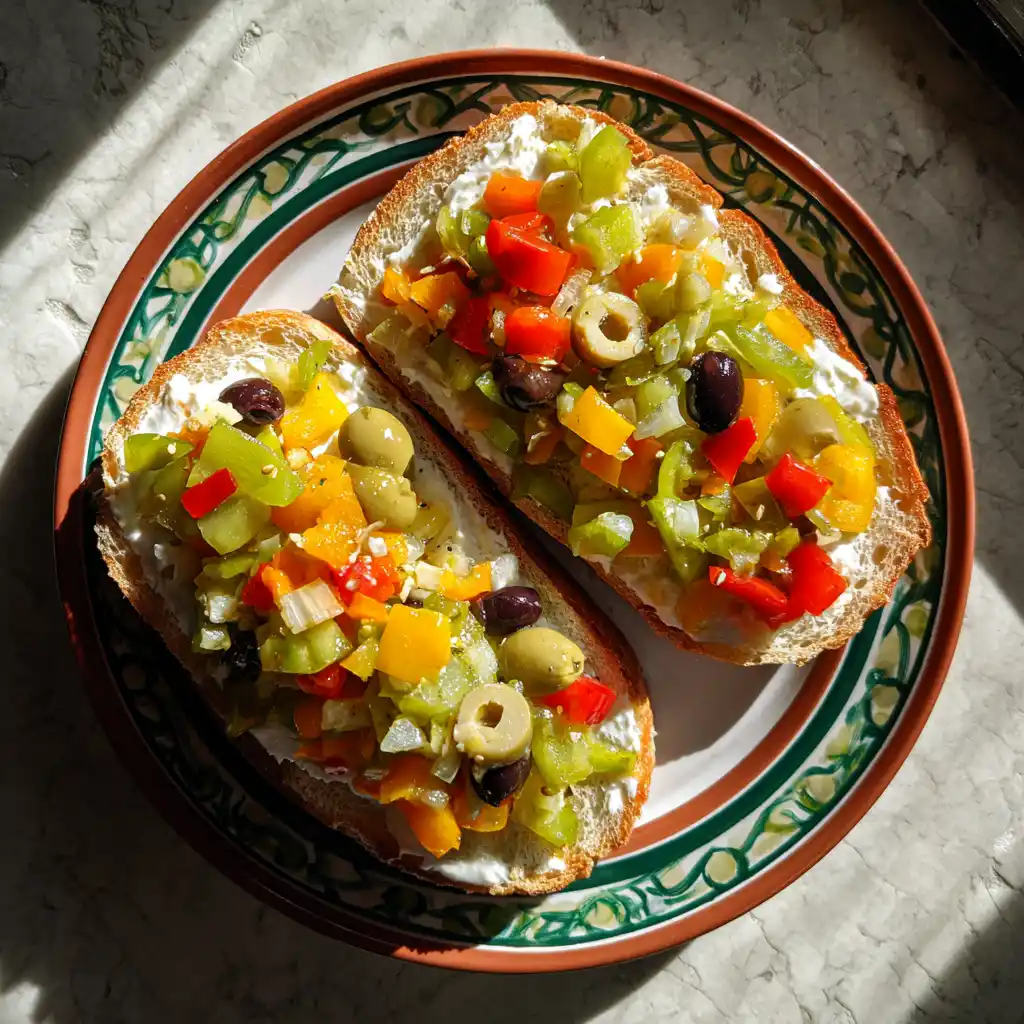
Giardiniera on Pizza, Pasta, and Hot Dogs
Giardiniera isn’t just for sandwiches — it’s one of the most versatile condiments you can keep in your fridge. Once you’ve got a jar on hand, it becomes a go-to flavor booster for everything from classic Italian dishes to American comfort food.
Here are some bold ways to use giardiniera in your cooking:
1. On Pizza
Skip the usual olives or peppers — spoon a few tablespoons of giardiniera over your pizza for a tangy, spicy twist. It pairs especially well with sausage, mozzarella, or even plant-based toppings.
2. With Pasta
Add chopped giardiniera into pasta salads for extra crunch, or stir into warm pasta just before serving for a burst of acidity that balances creamy sauces or rich meats.
3. On Hot Dogs
Take a cue from Chicago and pile it on! Whether it’s a beef frank or a turkey dog, this pickled mix adds a spicy punch and vibrant texture that elevates every bite.
Want more low-carb inspiration? Check out our low-carb fried rice recipe — a great alternative base for chopped giardiniera toppings.
Incorporating Giardiniera in Salads and Charcuterie Boards
Salads come to life when you toss in a few spoonfuls of chopped giardiniera. It works especially well in grain bowls, cold pasta dishes, and protein-rich salads with tuna, grilled chicken, or beans.
To use giardiniera in salads:
- Drain lightly and chop finely
- Mix with a vinaigrette or use brine as part of the dressing
- Combine with fresh herbs like parsley or basil for balance
And when it comes to charcuterie boards, giardiniera brings a bright contrast to the richness of cured meats and cheeses. Use it alongside:
- Hard cheeses like aged cheddar or Parmesan
- Salami, soppressata, or mortadella
- Crusty bread or whole-grain crackers
- Sweet bites like dried apricots or figs for balance
This condiment doesn’t just add flavor — it adds color, crunch, and acidity, which are key elements of a well-rounded board.
Giardiniera Around the World
Chicago-Style Giardiniera: An American Spin
While giardiniera began as a traditional Italian method for preserving vegetables, it truly found a second life in the U.S. — particularly in Chicago. When Italian immigrants settled in the Midwest, they adapted the original vinegar-based recipe to suit American palates and local ingredients.
The result? A spicy, oil-packed version that quickly became iconic.
Key characteristics of Chicago-style giardiniera:
- Uses olive oil or vegetable oil instead of vinegar as the primary base
- Includes hot peppers like sport peppers or serranos
- Commonly features olives, which aren’t usually found in Italian versions
- Often chopped finely and used as a sandwich topping
The most popular way to enjoy this variation is on the Chicago Italian beef sandwich — thinly sliced, juicy roast beef stuffed into a crusty roll and topped with a generous scoop of giardiniera for heat and crunch.
But its uses go far beyond beef. Locals love it on pizza, burgers, hot dogs, and even baked potatoes.
For more on bold, globally inspired condiments, don’t miss our grilled mahi mahi guide — where citrusy toppings and spicy sides take center stage.
Global Adaptations and Fusion Variations
Beyond Chicago and Italy, giardiniera has been adapted worldwide, often blending with local traditions and flavor preferences. This has given rise to exciting fusion versions that showcase the adaptability of this preserved vegetable mix.
Notable global twists:
- Mexican-style giardiniera (escabeche): Carrots, jalapeños, and onions in vinegar with bay leaf and oregano
- Middle Eastern style: Includes turnips, cauliflower, and beets for a deep pink brine
- Korean fusion: Combines pickled daikon and spicy gochugaru with classic giardiniera vegetables
- Gourmet versions: Chefs now include seasonal veggies like asparagus, radishes, or fennel, along with non-traditional spices like turmeric, mustard seeds, or dill
As food becomes more global, so does giardiniera. The core concept — preserved veggies with bold flavor — remains the same, but the variations are endless.
Storing and Buying Giardiniera
Best Ways to Store Homemade and Store-Bought Giardiniera
Whether you’ve made a fresh batch of homemade giardiniera or picked up a premium jar from the store, storage plays a key role in preserving both flavor and safety.
Here are the best practices for keeping your giardiniera fresh:
| Type | Storage Method | Shelf Life | Notes |
|---|---|---|---|
| Homemade (vinegar-based) | Sealed jar in fridge | 4–6 weeks | Use clean utensils to avoid contamination |
| Homemade (fermented) | Glass jar in fridge | 1–2 months | Keep submerged in brine to prevent spoilage |
| Oil-packed (Chicago-style) | Airtight jar in fridge | 2–3 weeks | Oil may solidify—bring to room temp before using |
| Store-bought (unopened) | Pantry | Check label | Keep in a cool, dark place |
| Store-bought (opened) | Refrigerator | 3–6 months | Ensure lid is tight after each use |
Important tip: Always use non-reactive containers like glass jars. Metal can alter flavor and reduce shelf life. Also, label your homemade batch with the date you prepared it — that way, you never guess if it’s still good.
What to Look for When Buying Quality Giardiniera
There are plenty of jarred giardiniera options on store shelves, but not all are created equal. Here’s how to spot the good stuff:
✅ Check the ingredient list:
Look for real vegetables, natural spices, and minimal preservatives. Avoid anything with artificial colors or “flavor enhancers.”
✅ Consider the oil:
If you’re going for a Chicago-style version, olive oil is a better choice than soybean or canola, offering more flavor and nutritional value.
✅ Look at the cut:
Smaller, chopped versions are ideal for sandwiches. Chunky versions work better as a side dish or charcuterie add-on.
✅ Mind the heat level:
Some brands pack serious spice. Check the label or reviews if you’re sensitive to heat.
FAQ About Giardiniera
What is a giardiniera made of?
Is giardiniera healthy?
What does a giardiniera taste like?
How do Italians eat giardiniera?
Conclusion: Why Giardiniera Deserves a Spot in Your Kitchen
From its humble Italian roots to its bold American reinvention, giardiniera proves that preserved vegetables can be far more than a side dish. It’s colorful, versatile, and packed with flavor — perfect for jazzing up anything from antipasto platters to weeknight sandwiches.
Whether you prefer it crunchy and vinegary or spicy and oil-packed, giardiniera brings a welcome burst of acidity and heat to your meals. It’s a pantry essential that’s not only easy to make but endlessly customizable based on your tastes and dietary needs.
For more recipe inspiration and visual guides, check out our curated boards on Pinterest.

